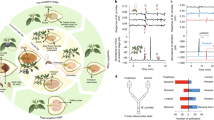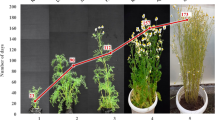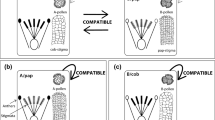Abstract
POLLEN- and associated stigma-dimorphism within the family Plumbaginaceæ were discovered in 1883 by McCleod1, who observed them in Limonium. Since then, the range of genera showing pollen-dimorphism has been extended by various authors2–5to include Armeria, Acantholimon and Limoniastrum, while stigma-dimorphism has also been demonstrated in Armeria3,4.
This is a preview of subscription content, access via your institution
Access options
Subscribe to this journal
Receive 51 print issues and online access
$199.00 per year
only $3.90 per issue
Buy this article
- Purchase on SpringerLink
- Instant access to full article PDF
Prices may be subject to local taxes which are calculated during checkout
Similar content being viewed by others
References
McCleod, J., Bot. Centralbl, 29, 152 (1887).
Kulczynski, S., Aeta Soc. Bot. Polon., 9, 296 (1932).
Erdtman, G., Svensk. Bot. Tidskr., 34, 377 (1940).
Iversen, J., Kgl. Bansk. Vidensk. Selsk., Biol. Meddel., 15, 1 (1940).
Szafer, W., Starunia, 20, 1 (1945).
Maheshwari, P., Lloydia, 10, 1 (1947).
von Müller, F., Bot. Z., 113 (1868).
Dahlgren, K. V. O., Svensk. Bot. Tidskr., 12, 362 (1918).
Author information
Authors and Affiliations
Rights and permissions
About this article
Cite this article
BAKER, H. Relationships in the Plumbaginaceæ. Nature 161, 400 (1948). https://doi.org/10.1038/161400a0
Issue date:
DOI: https://doi.org/10.1038/161400a0
This article is cited by
-
Dimorphic exine sculpturing in two distylous species ofDyerophytum (Plumbaginaceae)
Plant Systematics and Evolution (1986)



